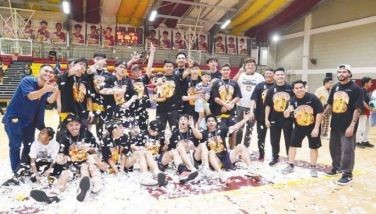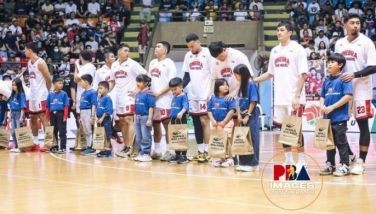Protecting your child from head lice
MANILA, Philippines - Parents may not realize this soon enough: school is one of the most likely places for head lice (kuto) to spread. But why do head lice spread more easily in school anyway?
The most common reason is this: there is a lot of close contact among school children for an extended period of time. School children play together, engage in some light rough-and-tumble and touch each other’s hair, and even share personal items — think about how school friends can share combs, headbands, ribbons, and other forms of hair ties. They also engage in sports, school activities, and have sleepovers (where they may share pillows and linen).
Fortunately, you can take steps to prevent your child from getting lice, and to control and eliminate lice that have infested your child’s scalp.
• Avoid direct physical contact. It’s a good thing that head lice don’t fly. However, direct physical contact — hair-to-hair contact, or contact between an infested child’s fingers (that may have nits or lice eggs, if not actual lice) with another child’s hair or scalp — will transfer and spread lice. You can remind your child to avoid this but then, kids will be kids, right?
• Avoid sharing personal items. Personal items that spread lice don’t just include combs and hair accessories. Lice and nits can be present in hats, caps, scarves, jackets, sweaters, and sports uniforms. When school children share these, lice can be spread among them. You can instruct your children to avoid, if possible, sharing such items with each other.
But what do you do when your child is already infested with lice? You can presume that there are already lice and nits in his or her uniform, other clothing, and personal items. There could also be lice and nits in pillows, blankets, and linen.
Here are some steps to control and eliminate lice:
• High temperatures and plastic bags. Clothes, pillows, pillowcases, blankets and other linen should be washed in hot water and then put in a dryer with high heat. This will kill the lice and nits. Clothes and other items that cannot be washed may be dry-cleaned or placed in a plastic bag for two weeks. Lice that are unable to feed die in one to two days; nits survive for little more than a week when not on the scalp.
• Vacuum and clean the house thoroughly. Vacuum the floor and furniture that an infested person has been in contact with. You don’t need to overdo this, however, since lice or nits that have fallen from the scalp will not survive long.
• Use an effective and safe head lice treatment shampoo. LiceAliz is proven safe and effective when it comes to eliminating head lice in children and adults. It kills lice using a natural ingredient made from chrysanthemum flowers called pyrethrin. It’s easy and convenient to use: just apply, lather, and rinse like regular shampoo. Leave on hair for about 10 minutes before rinsing. Use it twice a week for two weeks. After that, use it once a week to prevent head lice from coming back. Follow the label instructions for best results.
There’s even a LiceAliz variant with conditioner for softer, smoother, healthier hair. Another variant has menthol for a cool, refreshing feeling on the scalp. LiceAliz is safe to use on children as young as two years old.
- Latest






























